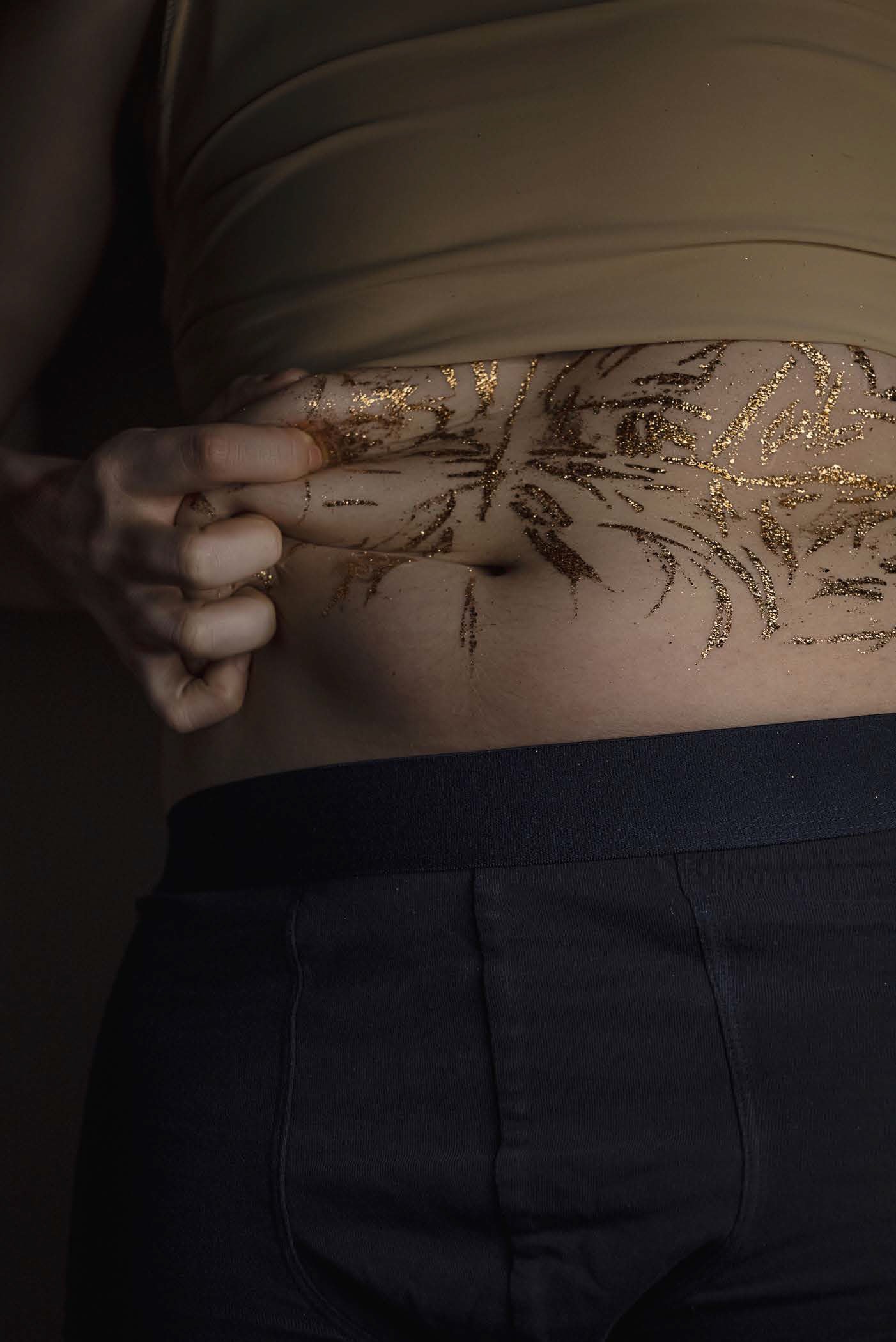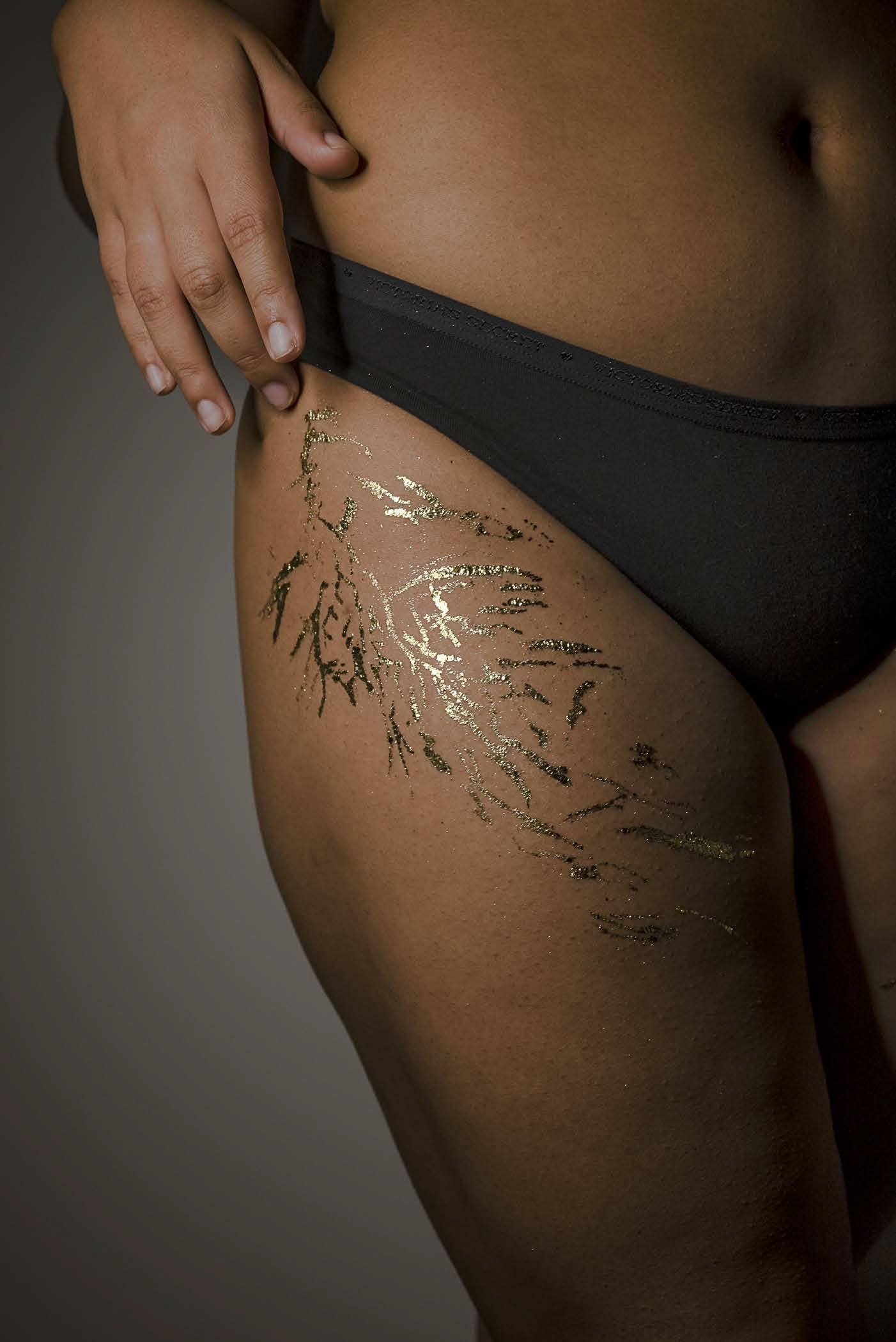



Kintsugi, also known as kintsukuroi, is the Japanese art of repairing broken pottery with a mixture of lacquer and a choice of gold or silver. The philosophy behind this art is to value the beauty of an object, along with its imperfections. Kintsugi is a lesson that teaches people to understand that Imperfections do not hinder the beauty of an Object— These imperfections are to be celebrated, not disguised and hidden. In this photo series, I implemented the philosophy of Kintsugi onto people. Society today has set an ideal of what the “perfect” person is, from having flawless skin to having a specific body type— They have even established a standard for someone’s mental health. These standards of a perfect person are instilled in young children as soon as they can understand the meaning of these words. As people seek validation through these standards, some will go to extreme lengths to receive it— such as developing eating disorders to maintain or reach a certain weight. People learn to hide imperfections, such as stretch marks and scars, rather than embrace them, even though they prove that they have lived life. Bodies change, Scars appear, but they do not affect your level of worth as a human being. During the process, learning about what each person thought was, or was not, a physical imperfection and how they affected everyone differently, along with how some grew to accept these Imperfections was intriguing. Each Imperfection had a reason and story behind it, whether it is just a part of the body one is unhappy with, a scar from surgery, or a physical expression of an internal battle. The feeling of being less due to not fitting into society’s standard begins to fade once people understand that they do not have to fit into the unachievable standard set for them.
